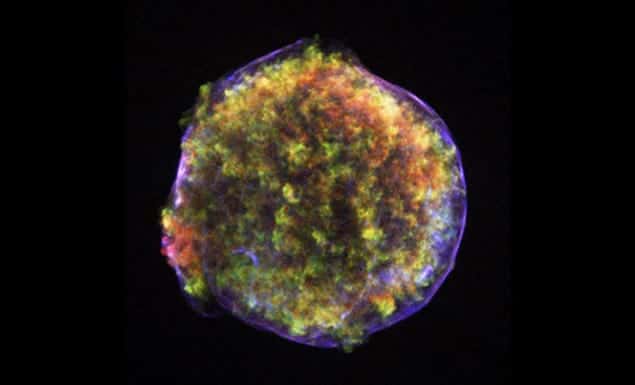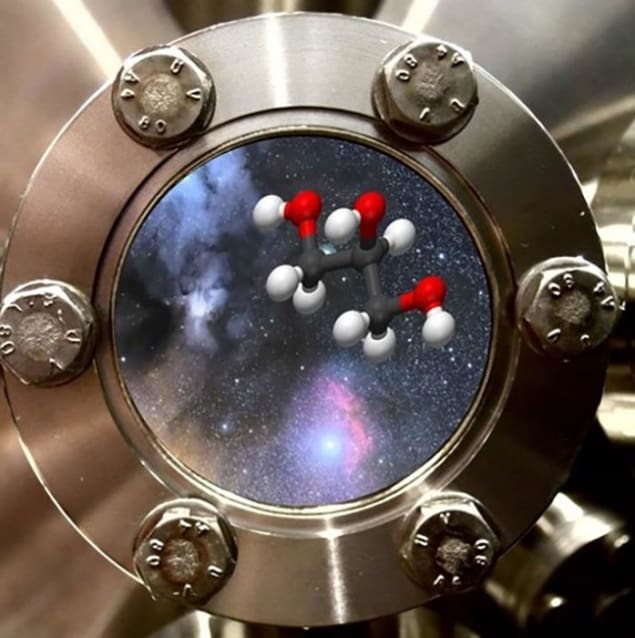Flash Physics is our daily pick of the latest need-to-know developments from the global physics community selected by Physics World‘s team of editors and reporters

Chandra helps map Tycho supernova remnant in 3D
The first 3D view of a supernova remnant has been assembled using 12 years worth of data from NASA’s Chandra X-ray observatory. A supernova remnant is what is left over after a star explodes. As the ejected matter expands outwards into the interstellar medium, bounded by a shockwave, the remnants often exhibit asymmetries in their motion and shape. In an attempt to understand the mechanisms involved in shaping remnants, Brian Williams at the Space Telescope Science Institute in the US and colleagues studied the Tycho supernova remnant using X-ray data. First observed in 1572, and named after astronomer Tycho Brahe, Tycho is a type Ia supernova thought to result from the destabilization of a white dwarf in a binary system as its partner star transferred mass to it. Now, Tycho appears to be a roughly circular cloud of clumpy matter, but it is understood its shockwave has twice the velocity on one side than the other. To investigate the asymmetry, the team focussed on 57 “tufts” of silicon-rich ejecta in Tycho. Using the Chandra observations, they were able to measure the tufts’ velocities and therefore build a full 3D map of their motion. Unlike the shockwave, the ejecta shows no asymmetry, suggesting the explosion itself was symmetrical. A possible explanation is that the shockwave is affected by density gradients in the interstellar medium while the ejected matter is not. Williams and colleagues also attempt to address Tycho’s clumpy nature, questioning whether the ejecta started out as clumpy or began as smooth and then clumped together during expansion. Their simulations, however, demonstrate that neither option can be ruled out at the moment. The work is presented in The Astrophysical Journal.
Cosmic glycerol is made here on Earth
Glycerol has been made for the first time in a laboratory that simulates the conditions in dark interstellar clouds. Gleb Fedoseev, Harold Linnartz and colleagues at the University of Leiden in the Netherlands made the compound by firing hydrogen atoms at carbon-monoxide ice at low pressure and at a chilly 23 K. Glycerol is an essential component of cell membranes in living creatures and it is possible that life on Earth – and perhaps other planets – emerged because this and other life-related molecules can be delivered to planetary surfaces by comets. The compound comprises 14 atoms and is the largest made so far under interstellar conditions. In 2009, the team made formaldehyde (four atoms) and methanol with (six atoms). Then in 2015, they made the eight-atom sugar glycolaldehyde. Linnartz explains that successively larger molecules are created by having the smaller molecules interact with each other. “We now have reached the level of glycerol, two levels higher and we have ribose, a sugar that is important in the coding of our genes,” he says. While formaldehyde, methanol and glycolaldehyde have already been discovered in interstellar clouds, astronomers have yet to spot glycerol in space. The Leiden team now plans to use the ALMA radio telescope in Chile to look for signs of the compound. The research is described in The Astrophysical Journal.




